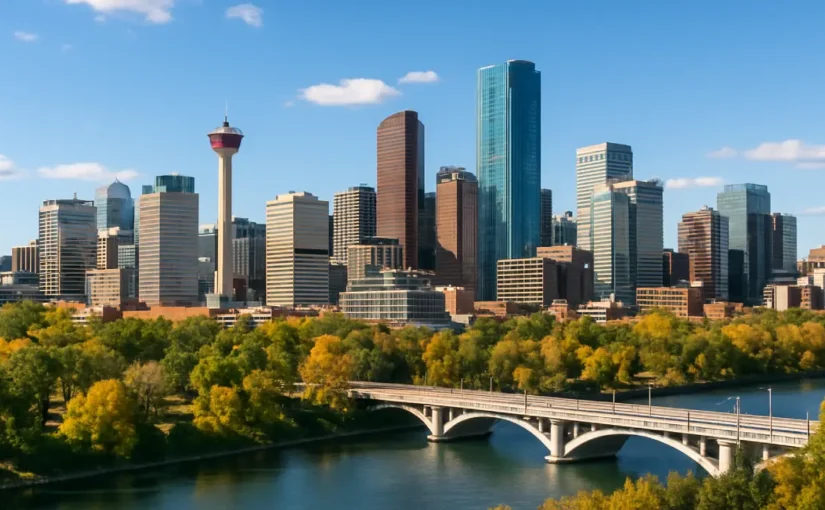
Calgary Braces for Changes as Canada Prepares the 2026–2028 Immigration Plan
Impact on Calgary’s growth and workforce
Canada will release the 2026–2028 Immigration Levels Plan on or before November 1, 2025. The government will use this plan to set the number of permanent and temporary residents it admits over the coming years. Calgary continues to grow, and the plan will influence local housing planning, transit expansion, and workforce participation. Us immigration lawyer discussions sometimes take place in Calgary, where residents compare mobility between Canada and the United States, highlighting how immigration policies shape regional planning.
Permanent Resident Numbers Stabilizing
The federal Government has signalled that permanent resident totals for 2026 are expected to remain below 1% of Canada’s population, roughly 416,500, based on mid-2025 population figures. The 2025–2027 plan already reflected this approach, indicating continued moderation rather than a rapid increase. Some individuals considering moving from Calgary to U.S. cities consult a U.S. immigration lawyer to determine which side of the border aligns with their employment options.
| Year | Plan 2025–2027 | Previous Plan |
| 2025 | 395,000 | 500,000 |
| 2026 | 380,000 | 500,000 |
| 2027 | 365,000 | — |
Express Entry and Calgary’s Labour Landscape
Express Entry continues to use two main pathways: Federal Economic Priorities (which involves occupation and language categories) and In-Canada Focus (for individuals already living in Canada on temporary status). These pathways are relevant in Calgary, where sectors such as construction, health-related roles, digital services, and logistics maintain steady labour demand. Those comparing work options in Calgary with potential U.S. roles may speak with a us immigration lawyer to assess timelines and implications.
Alberta’s Provincial Nominee Program Direction
The Provincial Nominee Program (PNP) saw reduced federal targets in the previous plan. Still, provinces—including Alberta—negotiated higher allocations for 2025 after raising labour market concerns. Discussions among provincial and federal officials late in 2025 suggested the possibility of increased PNP landings beginning in 2026. Workers navigating both Alberta PNP and U.S. pathways sometimes consult a us immigration lawyer to evaluate cross-border credential recognition.
| Year | PNP Plan 2025–2027 | Previous Plan |
| 2025 | 55,000 | 120,000 |
| 2026 | 55,000 | 120,000 |
| 2027 | 55,000 | — |
Temporary Resident Planning and Calgary Institutions
Temporary resident projections now appear directly in the Levels Plan. These include international students, participants in the Temporary Foreign Worker Program (TFWP), and workers in the International Mobility Program (IMP). Calgary’s post-secondary institutions—such as the University of Calgary, SAIT, and Bow Valley College—respond to these targets through student housing planning and program seat management. Those comparing Canadian study pathways with U.S. academic routes sometimes discuss differences with a us immigration lawyer, especially when considering future work options.
| Category | 2025 | 2026 | 2027 |
| IMP | 285,750 | 128,700 | 155,700 |
| TFWP | 82,000 | 82,000 | 82,000 |
| Students | 305,900 | 305,900 | 305,900 |
Temporary Foreign Worker Program Adjustments
Changes to the TFWP in the past year include:
- A pause on low-wage processing in regions with unemployment above 6%
- Higher wage thresholds for high-wage applications
- Reduced ceilings on how many TFWP workers businesses may use
- Narrowed eligibility for spousal open work permits
The adjustments in the TFWP address specific workforce gaps. In some cases, individuals in Calgary compare the TFWP to U.S. temporary work routes. They may speak with a us immigration lawyer about how each system manages labour categories.
French-Speaking Admissions Outside Quebec
Federal planning continues to increase the share of French-speaking permanent residents settling outside Quebec, moving from:
- 8.5% in 2025
- 9.5% in 2026
- 10% in 2027
Campaign statements referenced reaching 12% by 2029. Calgary has expanding francophone communities, supported by French-language schools, cultural associations, and growing community networks. Individuals who consider mobility between francophone communities in Canada and certain regions of the United States sometimes consult a us immigration lawyer to compare residency timelines.
International Student Permit Caps Still Pending
The national target of 305,900 student arrivals for each of 2025, 2026, and 2027 remains in place. Still, the final numbers depend on the federal cap announcement made each year. For Calgary, this impacts rental availability near campuses and community services for arriving students. Students comparing Calgary programs with U.S. institutions may speak with a us immigration lawyer to review study-to-work transition policies.
Cross-Border Employment Links and Calgary Employers
Calgary employers with operations in oil and gas, engineering, and transportation may manage teams that span Canada and U.S. project sites. For some workers on Alberta-based payrolls, consultation with a us immigration lawyer can clarify requirements for cross-border assignments.
Calgary Residents with Family in the United States
Calgary has numerous families with close ties to cities such as Seattle, Denver, Phoenix, and Houston. In situations involving cross-border family sponsorship, individuals may reach out to a us immigration lawyer for clarity on procedure differences.
Entrepreneurs and Business Movement
Calgary’s startup and business investment environment includes a growing interest in trade and market access south of the border. Business owners examining expansion into U.S. markets may consult a us immigration lawyer to map their pathway.
Travel Patterns and Work Flexibility
Calgary’s location near international air routes means travel between Calgary and U.S. hubs remains common for employment or academic collaboration. In these contexts, speaking with a us immigration lawyer may help individuals understand entry conditions, documentation timelines, and work status implications.
Popular Posts
- Calgary Braces for Changes as Canada Prepares the 2026–2028 Immigration Plan
- Canada’s Population Growth Slows as Immigration Policies Tighten
- 12 Questions Employers Ask About the L1 Visa in Calgary
- 7 Options If Your TN Visa in Calgary Is Taking Too Long
- Ready for the U.S.? What You Should Know About Immigration Rules if You’re in Calgary
